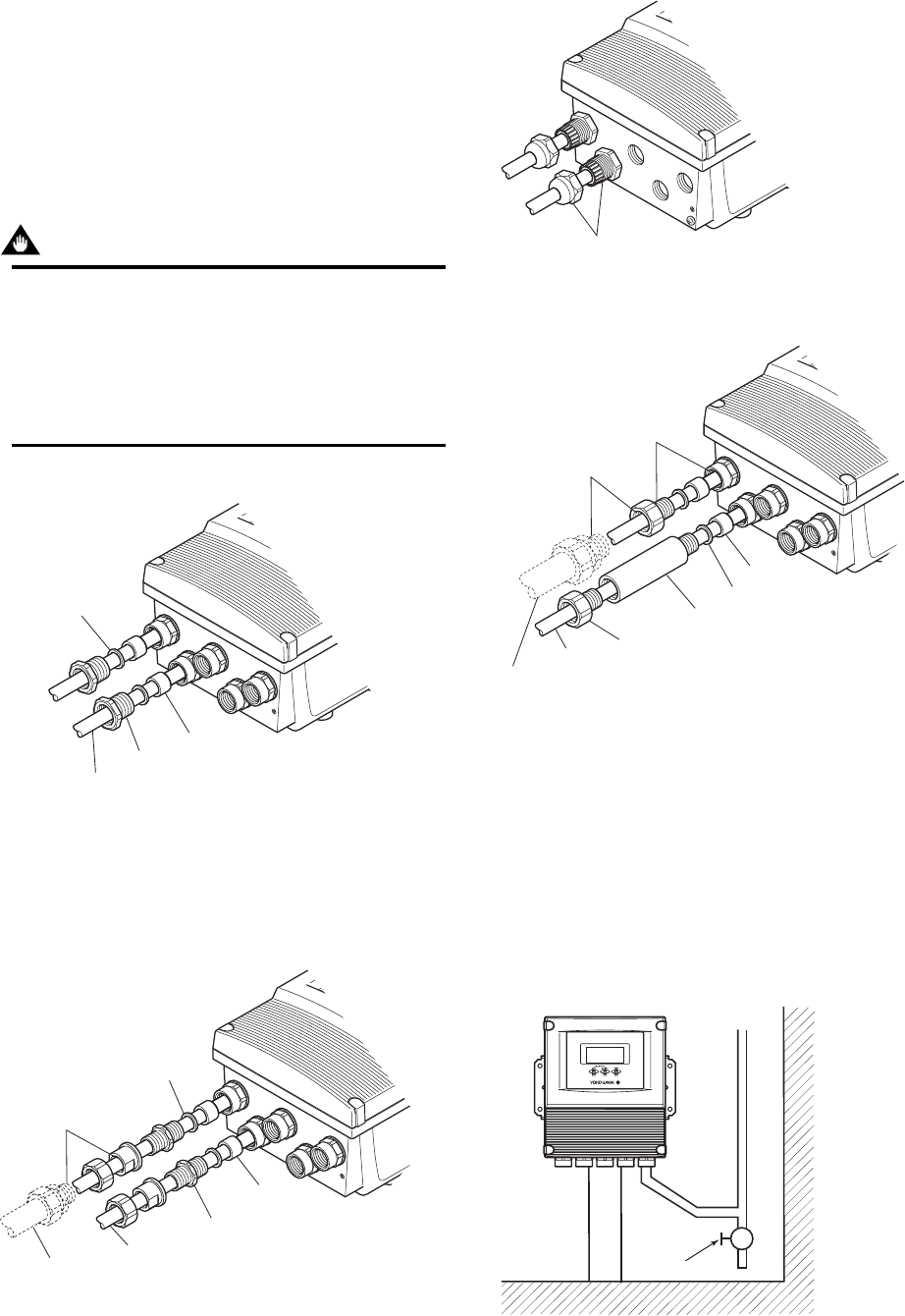
IM 01E20C01-01E
4-3
4. WIRING
(1) When there are no particular optional
specifications
The wiring port is sealed with a cap (not water-proof)
that must be removed before wiring. At this time,
handle the wiring port in accordance with the JIS
C0920-1982 mentioned above.
(2) Wiring using waterproof glands
IMPORTANT
To prevent water or condensation from entering
the converter housing, waterproof glands are
recommended. Do not over-tighten the glands or
damage to the cables may result. Tightness of
the gland can be checked by confirming that the
cable is held firmly in place.
Cable
Waterproof gland
Gasket
Washer
F0404.EPS
Figure 4.3.1 Waterproof Gland (Optional Code EG)
For working on the electric wire tubes or the flexible
tubes (PF1/2), remove the waterproof gland and attach
them directly to the wiring port.
Gasket
Washer
Tightening gland
When working on conduit pipes or flexible pipes (PF1/2 only)
Cable
PF1/2
F0405.EPS
Figure 4.3.2 Waterproof Gland with Union Joint
(Optional Code EU)
Plastic gland
F0406.EPS
Figure 4.3.3 Plastic Gland (Optional Code EP)
Gasket
Washer
When working on electric wire tube or flexible tube (PF3/4)
* When connecting PF1/2, remove the conversion plug and
connect directly to wiring port.
Extension plug (x2)
Cable
PF3/4
PF1/2
Conversion plug (x5)
F0407.EPS
Figure 4.3.4 PF3/4 Waterproof Gland (Optional Code EW)
(3) Conduit Wiring
When wiring the conduits, pass the conduit through the
wiring connection port, and utilize the waterproof
gland to prevent water from flowing in. Place the
conduit pipe on an angle as shown in Figure 4.3.5.
Install a drain valve at the low end of the vertical pipe,
and open the valve regularly.
Drain valve
F0408.EPS
Figure 4.3.5 Conduit Wiring


















